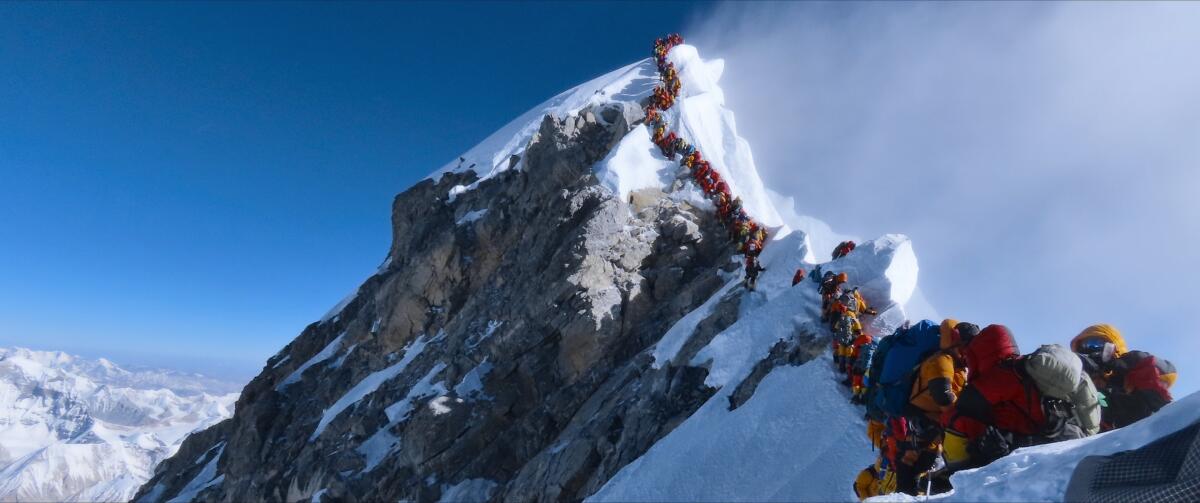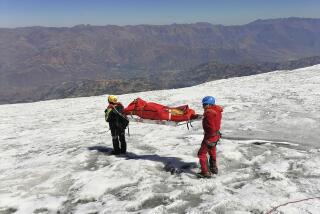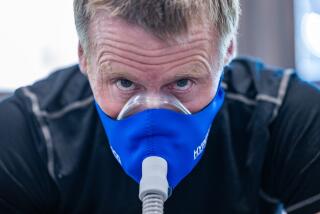Review: ‚Äė14 Peaks: Nothing Is Impossible‚Äô rises above the clouds

‚ÄúDon‚Äôt be afraid to dream big,‚ÄĚ says Nepali mountaineer Nirmal ‚ÄúNims‚ÄĚ Purja at the start of the arresting documentary ‚Äú14 Peaks: Nothing Is Impossible.‚ÄĚ And if anyone walks the walk (climbs the climb?) it‚Äôs Purja, who, as recounted here, broke six world records in 2019 when he summited all 14 of the world‚Äôs 8,000-meter (nearly 26,247 feet) peaks in less than seven months. The previous record holder took more than seven years.
Purja, now 38, and his crack support team of Nepali sherpas shot the stunning footage, including drone photography, as they conquered each dizzyingly high locale. Their mission, dubbed ‚ÄúProject Possible,‚ÄĚ began in Nepal, continued on to Pakistan and Tibet, and included scaling such famed and treacherous peaks as Mt. Everest, K2 and Annapurna.
Director Torquil Jones, who co-wrote with Gabriel Clarke, combines Purja and company‚Äôs visuals with archival clips of past high-altitude climbs, bits of animation and recent interviews with other professional mountaineers. Among them: ‚ÄúFree Solo‚ÄĚ and ‚ÄúThe Rescue‚ÄĚ co-director Jimmy Chin (also an executive producer here), Tyrolean explorer Reinhold Messner (he ascended the same 14 mega peaks as Purja ‚ÄĒ over the course of 16 years) and world-class alpinist Don Bowie. Chats with Purja‚Äôs brother, sister and wife, as well as lots of lovely footage of Purja with his ailing, deeply devoted mother, are also effectively woven in with the more adventurous, often death-defying footage.
Purja, a former Nepali Gurkha soldier and member of the U.K. Special Forces, takes on ‚ÄúProject Possible‚ÄĚ with near superhuman gumption and endurance. He‚Äôs a charming, exuberant leader out not only to achieve an incredible physical ‚ÄĒ at times even metaphysical ‚ÄĒ feat but also to help bring Nepal and his nation‚Äôs uber-climbers into the international spotlight. He‚Äôs kind of amazing.
Obstacles thrown at Purja and his fellow mountaineers include avalanches, hanging ice cliffs, downed climbers in dire need of rescue and HACE (high-altitude cerebral edema), an acute physiological reaction that can occur above 4,000 meters (13,123 feet).
Then there‚Äôs the great oxygen debate: Should climbers rely on self-carry oxygen canisters for use above 8,000 meters (a.k.a. ‚Äúthe Death Zone‚ÄĚ) or does the added weight and potential overdependence on the portable air outdo the benefits?
For all the intrepid, awe-inspiring action seen here, the film is a bit light on conflict, tension and, well, cliffhangers. Maybe that‚Äôs because we know going in that Purja not only survived but also made history. The film is largely about success rather than process; more practical detail, please. Also, there‚Äôs so much geographic territory to cover in 100 minutes that the peaks and their ascendancies can feel somewhat fleeting and interchangeable. (Think ‚ÄúIf It‚Äôs Tuesday, This Must Be Kanchenjunga.‚ÄĚ)
Still, as a crash course in extreme mountain climbing, the triumph of the human spirit, love of country and family, and those driven, fearless souls who choose to reach above the clouds, ‚Äú14 Peaks‚ÄĚ is a uniquely stirring journey.
‚Äė14 Peaks: Nothing Is Impossible‚Äô
In English and Nepali with English subtitles
Not rated
Running time: 1 hour, 40 minutes.
Playing: Available on Netflix
More to Read
Only good movies
Get the Indie Focus newsletter, Mark Olsen's weekly guide to the world of cinema.
You may occasionally receive promotional content from the Los Angeles Times.










